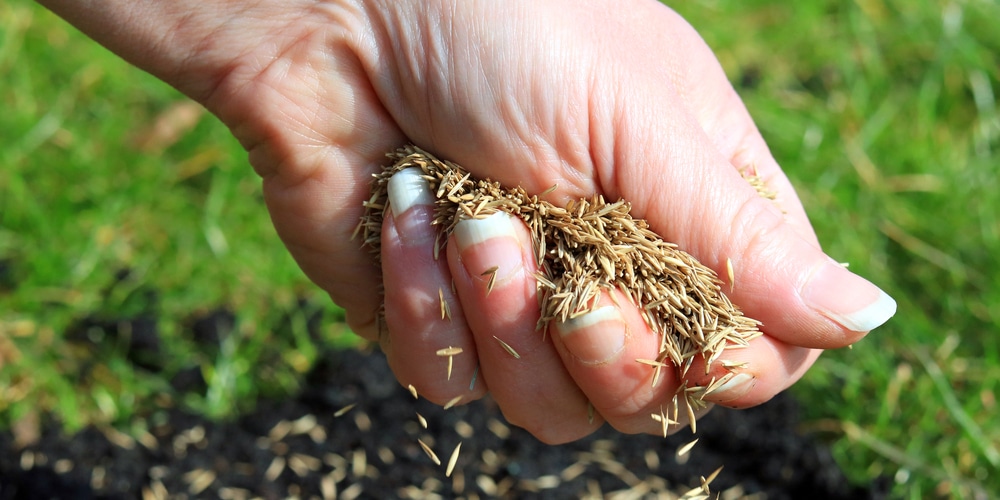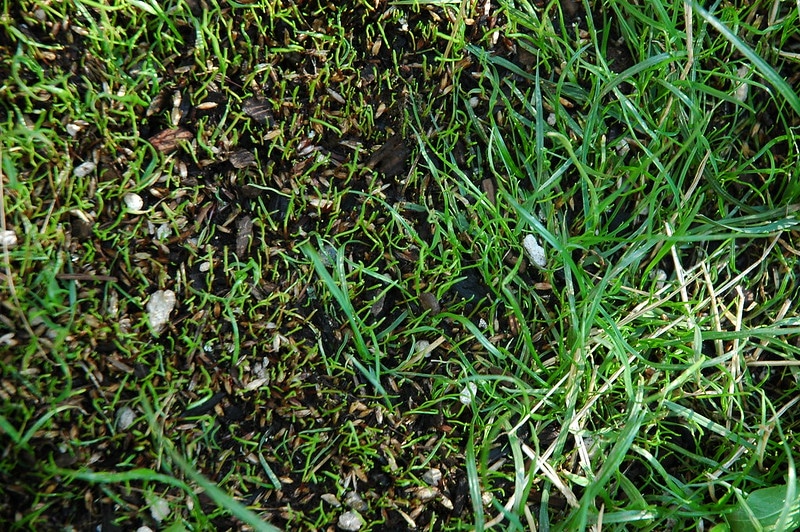Seeding a lawn is a great way to thicken up an existing turf or establish a new lawn. Whether you’re looking to overseed your lawn to repair bare spots or improve the density of your turf, the process is relatively simple. Commonly, aerating the lawn is recommended prior to overseeding. This process makes it easier for the new seed to make contact with the soil and establish a strong root system.
However, there are instances where aerating is impossible, or you simply don’t have the time for it. With that being said, can you proceed with overseeding? Yes – but there’s a proper way of doing it. If you’re interested in learning how to overseed lawn without aerating, then continue reading.
Is Aeration Necessary When Overseeding?
Most often, aeration is done to help loosen up compacted soil. This allows air, water, and nutrients to penetrate the turf more easily – resulting in a healthier lawn.
It helps with hastening the growth rates and may also contribute to a denser lawn. Overseeding is commonly done to help improve the density of turf, as well as repair any bare or damaged spots.
New grass grows healthier and denser when they’ve had the chance to develop its roots properly. Loose soil is ideal for new grass because it allows the roots to develop and spread out more easily. If the soil is too compacted, it’ll be difficult for the new seed to establish itself – no matter how much you water it.
While aeration may not be necessary, it will definitely make the process a whole lot easier. If you’re looking for an easier way out, then consider renting an aerator or hiring a professional to do it for you.
How to Overseed Lawn Without Aerating – The Right Way
If you can’t or don’t want to aerate the soil before overseeding, then there are a few things you can do to improve the success of the process. If you’re looking to overseed your lawn, but can’t or don’t want to aerate first, here’s a step-by-step guide on what you need to do:
Mow Lower Than Two Inches
The first step is to mow your lawn lower than two inches. Doing this will allow the new seed to make better contact with the soil. It will also minimize lawn diseases and thatch build-up.
Thoroughly Clean Debris
The next step is to clean up any debris on your lawn. This includes leaves, twigs, and even dead grass. You want to remove as much of this as possible so that the new seed has a clean surface to adhere to.
Loosen Up the Topsoil
After you’ve cleared the debris, it’s time to loosen up the topsoil. The key to overseeding without aerating is to create small holes or slits in the ground for the new seed to fall into. This can be done with a garden fork, garden rake, or a hoe. While you don’t have to loosen up the entire lawn, it’s important to do this in the areas where you’ll be overseeding.
This is an important process, especially if the soil is too compacted. Remember, you want to make it as easy as possible for the new seed to establish itself.
Apply Seed Evenly
Now it’s time to apply the seed. You want to make sure that you apply it evenly across the entire lawn. One way to do this is to use a seed spreader. This will help ensure that the seed is dispersed evenly and not in clumps.
Gently Rake In Seed
After you’ve applied the seed, gently rake it into the soil. Do not skip this process, as it’s important for the seed to make contact with the ground.
Use a Starter Fertilizer
Lastly, you want to use a starter fertilizer. Your fertilizer choice may vary depending on the type of grass you’re planting. Once you’ve selected a fertilizer, apply it according to the package directions. Water the lawn lightly to help the fertilizer absorb into the soil.
Final Thoughts
Whether you decide to aerate or not, overseeding your lawn is a great way to improve its density and overall health. By following the steps above, you can successfully overseed your lawn and skip the process of aerating.
Just remember that the steps above are applicable only if the soil is not too compacted. This will help ensure the growth of strong, healthy roots. If the soil is too compacted, then aerating will be necessary to help the new seed establish itself.

